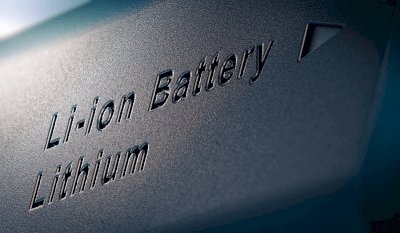What Is a Storage Battery?

A storage battery is a mechanical device that stores electric power as chemical energy. Batteries include primary batteries, which can only be discharged and not recharged, and secondary batteries, which can be repeatedly charged and discharged. A storage battery refers to a secondary battery.
The need for storage batteries has been drawing attention, not only as a backup power source but also for their use in storing renewable energy. They also are cost-effective and energy-saving devices such as for averaging power use during the day.
Uses of Storage Batteries
Storage batteries are used in a wide range of applications, from home to industrial use.
For home use, they can be used in conjunction with solar power generation to save electricity. For example, solar power can be harnessed during the daytime and sold if there is a surplus. Even if electricity is not sold, it can be stored in batteries during the day, along with late-night power obtained at a discounted rate. This stored power can then be utilized during the night, after the sun has set, effectively saving electricity. In addition, even if a power outage occurs due to a disaster, the electricity in the storage batteries can be used.
For industrial use, storage batteries are also used as backup power sources for high-power applications and uninterruptible power supplies for instrumentation. The major difference between industrial use and household use is the electrical capacity.
Principles and Types of Storage Batteries
The principle of operation of storage batteries differs slightly from one type to another, but the mechanism of extracting electric power through a chemical reaction remains the same. Storage batteries consist of a positive electrode, a negative electrode, and an electrolyte that assists with the chemical reaction between the positive and negative electrodes.
1. Lead Storage Batteries
Lead storage batteries are the oldest of all storage batteries and are mainly used in car batteries and emergency backup power sources. They use lead dioxide for the positive electrode, lead for the negative electrode, and dilute sulfuric acid for the electrolyte. They are inexpensive, highly resistant to overcharging, and have a very long service life of approximately 17 years. Its low energy efficiency in charging and discharging is a disadvantage.
2. Nickel-Metal Hydride Batteries
These batteries use nickel oxyhydroxide for the positive electrode, a hydrogen storage alloy for the negative electrode, and an alkaline solution, such as potassium hydroxide for the electrolyte. Before lithium-ion batteries, they were used as batteries for mobile devices and are still used in hybrid cars and railroad ground storage facilities. They are characterized by their resistance to over-discharge and over-charge and their ability to be rapidly charged and discharged, but their large self-discharge rate and short lifespan of about 5 to 7 years are their disadvantages.
3. Lithium-Ion Batteries
These batteries use lithium-containing metal oxide for the positive electrode, carbon material for the negative electrode, and organic electrolyte for the electrolyte. They are widely used as batteries for electronic devices used in daily life, such as notebook computers and smartphones, and in recent years, they have also been adopted as batteries for electric vehicles. They are characterized by their high energy density and ability to charge and discharge rapidly. They also have a relatively long service life of 6 to 10 years, but their cost is higher than other batteries.
4. Sodium Sulfur (NaS) Batteries
Also called NaS batteries, these batteries use sulfur for the positive electrode, sodium for the negative electrode, and β-alumina for the electrolyte, and are used as backup power sources for large-scale facilities such as factories. They are also known as NAS batteries and are used as backup power sources for large-scale facilities such as factories. They feature almost no self-discharge, excellent charge-discharge efficiency, and energy density. They offer a long service life of about 15 years and are attracting considerable attention as industrial batteries. In addition, cost reductions can be expected because of the abundant resources of electrode materials. However, the operating temperature is 300°C, so the high temperature must be maintained with a heater, and the electrode material is a hazardous material, so safety is a major issue.
Other new batteries, such as redox flow batteries, in which the electrolyte tank and cell stack can be installed separately, are also emerging.